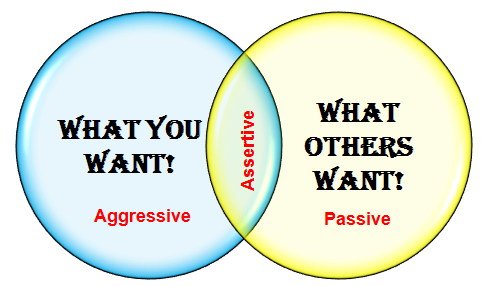The 8 Listening Villains: Overcoming Barriers to Effective Listening
Effective communication is a two-way street, and listening plays a crucial role in this process. However, not all listening is created equal. In his work, Trimboli introduces four listening villains that often hinder our ability to listen effectively. By identifying these listening villains within ourselves, we can take steps to overcome these barriers and become better listeners.
The Listening Villains
In the realm of effective communication, there exist formidable adversaries known as “Listening Villains.” These elusive villains take various forms, from the interrupting listener to the dramatic listener, and they all share a common mission: to impede the art of active and empathetic listening. As we embark on this exploration, we will uncover the identities and traits of these Listening Villains, shedding light on the barriers they erect in our path to meaningful communication. Join us on this journey to recognize, confront, and conquer these adversaries, and emerge as skilled and attentive listeners.
The Dramatic Listener
The dramatic listener is someone who often turns conversations into melodramas. They tend to react emotionally to what they hear, making the conversation about themselves rather than the speaker. This type of listener may interrupt with statements like, “That reminds me of the time when…” or “Let me tell you what happened to me.”
The Problem: When we become dramatic listeners, we shift the focus away from the speaker and onto ourselves. This can lead to the speaker feeling unheard and undervalued.
The Solution: To overcome the dramatic listener within us, we must practice active listening. This involves giving our full attention to the speaker, asking open-ended questions, and showing empathy without making the conversation about ourselves.
The Interrupting Listener
The interrupting listener is impatient and tends to cut off the speaker mid-sentence. They believe they already know what the speaker is going to say and want to jump in with their own thoughts or solutions. This can be frustrating for the speaker and hinder meaningful communication.
The Problem: Interrupting listeners fail to recognize that they may not fully understand the speaker’s perspective or concerns. This can lead to misunderstandings and missed opportunities for deeper understanding.
The Solution: To combat interrupting listener, we should practice patience and active listening. Allow the speaker to finish their thoughts before responding, and ask clarifying questions to ensure you fully grasp their point of view.
The Lost Listener
The lost listener is easily distracted and tends to drift off mentally during conversations. They may nod along but are not truly engaged with the speaker’s words. Distractions, both external and internal, often take precedence in their minds.
The Problem: Lost listeners may miss important details or fail to comprehend the full context of what is being said. This can lead to miscommunication and frustration on both sides.
The Solution: To overcome the lost listener within us, we must practice mindfulness and active engagement. Minimize distractions, maintain eye contact, and actively process the information being shared. If necessary, take notes to stay focused.
The Shrewd Listener
The shrewd listener is always on the lookout for hidden agendas and ulterior motives in what others say. They are highly skeptical and quick to question the speaker’s authenticity or intentions. While critical thinking is valuable, being overly suspicious can hinder trust and rapport.
The Problem: Shrewd listeners may come across as judgmental and create a defensive atmosphere in conversations. This can hinder open and honest communication.
The Solution: To address the shrewd listener tendencies, we should strive to balance skepticism with empathy. Give the speaker the benefit of the doubt and aim to understand their perspective before jumping to conclusions. Building trust is essential for effective communication.
The Selective Listener:
The selective listener is choosy about what they pay attention to in a conversation. They focus only on certain aspects of what is being said, filtering out information they consider unimportant or disagreeable. This type of listener may nod along when they agree but completely ignore or dismiss viewpoints they don’t agree with.
- The Problem: Selective listening can lead to misunderstandings and misinterpretations. It also makes the speaker feel like their perspective is not being fully heard or respected.
- The Solution: To overcome selective listening tendencies, practice active listening by giving equal attention to all aspects of the conversation, even if you disagree. Try to understand the speaker’s viewpoint before responding.
The Defensive Listener:
Defensive listeners are always on guard, ready to protect their own ideas or beliefs. They may respond to even minor criticisms or differing opinions with defensiveness, deflecting blame or refusing to consider alternative perspectives.
The Problem: Defensive listening can escalate conflicts and shut down productive discussions. It prevents open-mindedness and inhibits constructive dialogue.
The Solution: To combat defensive listening, practice empathy and self-awareness. Recognize when you’re becoming defensive and consciously choose to listen without immediately reacting. Try to understand the speaker’s point of view before expressing your own.
The Preoccupied Listener:
Preoccupied listeners have their minds preoccupied with other thoughts or concerns during a conversation. They may physically be present, but mentally, they are somewhere else. This can lead to responses that are irrelevant or disconnected from the ongoing conversation.
The Problem: Preoccupied listening can make the speaker feel unimportant and unheard. It also leads to missed opportunities for meaningful engagement.
The Solution: To address preoccupied listening, practice mindfulness and active presence. Make a conscious effort to clear your mind and focus on the conversation at hand. If necessary, inform the speaker that you need a moment to gather your thoughts before responding.
The Dominating Listener:
Dominating listeners tend to control conversations and monopolize the speaking time. They often interrupt or speak over others, making it difficult for others to express their thoughts and ideas fully.
The Problem: Dominating listening can stifle the voices of others and create an unequal balance in communication. It can also lead to frustration and resentment among those who feel unheard.
The Solution: To overcome dominating listening tendencies, practice active listening skills such as waiting your turn to speak, allowing others to express themselves, and showing respect for differing viewpoints.
Why are the above 8 are called listening villains?
The term “listening villains” is a metaphorical way to describe common listening behaviors and attitudes that can undermine effective communication and hinder the quality of our interactions with others. These listening villains are characterized by their negative impact on the listening process and the overall dynamics of a conversation. Here’s why they are called “listening villains”:
- Dramatic Listener: This listener often turns conversations into melodramatic personal stories, making the conversation more about themselves than the speaker. This behavior can overshadow the speaker’s message and make them feel unheard, casting the listener as a “dramatic” character in the conversation.
- Interrupting Listener: The interrupting listener frequently cuts off the speaker mid-sentence, disrupting the flow of the conversation. This behavior can be perceived as rude and disrespectful, positioning the listener as an “interrupter” or disruptor.
- Lost Listener: The lost listener is easily distracted and mentally drifts away during a conversation. This inattentiveness can lead to misunderstandings and missed opportunities for meaningful communication, labeling the listener as “lost” in their own thoughts.
- Shrewd Listener: The shrewd listener is highly skeptical and often looks for hidden agendas or ulterior motives in what others say. While critical thinking is valuable, excessive skepticism can hinder trust and create a cautious atmosphere, characterizing the listener as “shrewd” or overly suspicious.
- Selective Listener: The selective listener chooses what parts of the conversation to pay attention to, filtering out information they find unimportant or disagreeable. This behavior can lead to misunderstandings and make the listener appear “selective” in their engagement.
- Defensive Listener: Defensive listeners are quick to protect their own ideas or beliefs, responding with defensiveness to criticisms or differing opinions. This behavior can escalate conflicts and make the listener appear “defensive” or resistant to feedback.
- Preoccupied Listener: The preoccupied listener has their mind preoccupied with other thoughts during a conversation, making them appear disengaged. This behavior can make the listener seem “preoccupied” with their own concerns, rather than fully present in the conversation.
- Dominating Listener: Dominating listeners tend to control conversations, often by speaking over others or monopolizing speaking time. This behavior can create an uneven balance in communication and make the listener come across as “dominating” or overpowering.
Referring to these listening behaviors as “villains” emphasizes their negative impact on effective communication and encourages individuals to recognize and address these tendencies in themselves. By personifying these behaviors as villains, it becomes easier to understand their detrimental effects and motivates individuals to work on improving their listening skills for more constructive and productive interactions.
Conclusion
Effective listening is a skill that can greatly enhance our relationships and communication abilities. However, we must be aware of the 8 listening villains that can hinder our listening effectiveness.
Recognizing these listening villains within ourselves is the first step towards improvement. By practicing active listening, patience, mindfulness, and empathy, we can overcome these barriers and become better listeners. Ultimately, this not only strengthens our relationships but also enhances our ability to understand and connect with others on a deeper level.




